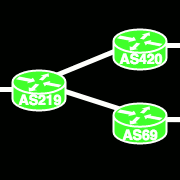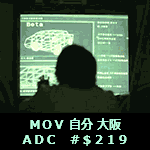|
Following up on your post with the time-space diagrams, am I correct in assuming that none of those intersections have the traffic signal lights on a sensor? What is your opinion of the sensors? Where I live (Sacramento, fabled city of awful traffic engineering), there is a four mile stretch of road (Truxel, from I-80 to Elkhorn) that has about 2 dozen lights, and some days I will hit every drat one because one solitary vehicle on a cross street or opposing turn lane will trip the sensor and stop the flow of 30-50 cars over and over and over.
|
|
|
|

|
| # ? Apr 18, 2024 18:08 |
|
FyreStar posted:Great thread, OP. Technology definitely makes things a lot easier. Traffic engineering used to be a field based more on guesswork and experience, but now you can just enter the traffic volumes into Synchro, press ctrl-T, and get your preliminary signal timings. Lazy engineers stop there, but the good ones do a lot more analysis, even going out in the field to tweak the timings manually. Honestly, computer models are great, but they don't account for regional variations. Synchro's drivers are all naïf, and VISSIM's drivers are idiots. There's so much tweaking required to make people act "normal," and even then, it's all just guesswork. Unfortunately, traffic engineering is on the bleeding edge of technology. Other countries, like England, France, Germany, and Australia, are doing some amazing things with real-time traffic monitoring. Here, though, we're just starting to get into it. Within 20 years, I hope we'll have a system to track every single vehicle in the system and allocate green time accordingly to minimize delay for everyone. It's possible; we could even do it now with enough money. As cars get "smarter," it'll get cheaper to monitor them. Two decades is an eternity for technology, though. Who knows? We could all be telecommuting by then, and then traffic wouldn't be much of an issue. I've got to get to bed, I'll check in tomorrow after work. Feel free to rack up some interesting questions. I'll also do a presentation on different types of interchanges, so you can learn about : Parclos! Spupclos! SPUIs! Volleyballs! Stacks! Directional Y's! Trumpets! Edit: Davenport posted:Following up on your post with the time-space diagrams, am I correct in assuming that none of those intersections have the traffic signal lights on a sensor? What is your opinion of the sensors? Where I live (Sacramento, fabled city of awful traffic engineering), there is a four mile stretch of road (Truxel, from I-80 to Elkhorn) that has about 2 dozen lights, and some days I will hit every drat one because one solitary vehicle on a cross street or opposing turn lane will trip the sensor and stop the flow of 30-50 cars over and over and over. That's a subject for Coordination 102. Basically, it's really really hard for current (1980s technology) signal controllers to adaptively allocate green time to different approaches by shifting cycle lengths. Check out England's take on the subject, both of you. Cichlidae fucked around with this message at 04:17 on Jul 28, 2009 |
|
|
|
Cichlidae posted:My approach to mass transit is that more is better. It's very hard to saturate rail lines, and more light rail means more direct trips and shorter headways. Even for construction of new rail corridors that spectacularly fail the is-it-better-than-a-bus test? Also what the hell do you guys have against unprotected left hand turn movements? It seems that every time a interchange is reworked and "improved" here the unprotected lefts are all eliminated.
|
|
|
|
Cichlidae posted:"LRT everywhere" might not seem like that sound of a strategy, but with efficiency like that, it's hard to argue with putting it wherever you can reasonably afford. A city half the size of Toronto, Brussels, has multiple metro and premetro lines, as well as several trams and a dense network of buses. My approach to mass transit is that more is better. It's very hard to saturate rail lines, and more light rail means more direct trips and shorter headways. For example, the Sheppard LRT is to be tacked on to the end of a half-built suburban subway line because they don't have the funding to extend it to it's logical terminus, the Scarborough Town Centre a few kilometres away. Instead, they're building an "LRT" from the end of the subway, PAST the Town Centre (which is far enough from that street that a bus ride is needed to connect) and all the way to the eastern border of the city, where ridership can easily be handled by bus service, perhaps with bus-only lanes. Now in order to get from Sheppard East to the subway downtown you have to take the LRT to the suburban subway, then that subway to the downtown subway. If you add in a possible bus ride on either end and the fact that TTC-style LRT barely goes faster than a bus, it comes to a long ride and a lot of transfers. I could fill a whole post about the retarded state of transit planning in Toronto, but I'd rather not bore you.
|
|
|
|
EDIT: Nevermind.
Varlock fucked around with this message at 17:09 on Nov 2, 2011 |
|
|
|
Speaking of the autobahn. How many changes, if any would we need to make non-urban freeways unlimited or at least 100+ mph? (Though if you are in NE, perhaps too many). I think it is hilarious that as cars (and tires) have gotten better that in places like NV have dropped speed limits. Though MT had to drop its "reasonable and prudent" because some guy doing 100mph in trhe rain was able to successfully argue his ticket should be tossed. I hate that guy. Davenport posted:Following up on your post with the time-space diagrams, am I correct in assuming that none of those intersections have the traffic signal lights on a sensor? What is your opinion of the sensors? Where I live (Sacramento, fabled city of awful traffic engineering), there is a four mile stretch of road (Truxel, from I-80 to Elkhorn) that has about 2 dozen lights, and some days I will hit every drat one because one solitary vehicle on a cross street or opposing turn lane will trip the sensor and stop the flow of 30-50 cars over and over and over.
|
|
|
|
How do you feel about New Jersey's (in)famous jug handles? I learned to drive there and actually liked them, but I can understand how they can be confusing. Funny how there's a handful of us from the greater Sacramento area bitching about our roads. 99/50/5 interchange.
|
|
|
|
Cichlidae posted:I could fill a whole thread with the things I saw there... and maybe I will! Is it this one? Oh, please let it be this one! Cichlidae posted:How much maths do you use in your modeling/design? Ever hear of Burgers equation? Is it at all useful or just theoretical wanking?
|
|
|
|
SlapActionJackson posted:Even for construction of new rail corridors that spectacularly fail the is-it-better-than-a-bus test? Yeah, from these three posts, it seems that Toronto's not really that good at planning. It's a little appalling to think that a municipality could be spending so much on improving its infrastructure, especially in expensive urban areas, but not do it properly. I'd be willing to bet, though, that it's not the engineers who are screwing things up. It's probably a powerful politician from whatever neighborhood who wants a tram line to himself. We all know the type, right? As to unprotected, or as we call them, permissive left turns, they're not as safe as protected left turns. We generally eliminate protected left turns when the number of left-turning cars in the peak hour gets around 200. Obviously, it's more efficient to have them turning whenever they can find a gap, but it's also a safety issue and it forces oncoming through traffic to slow down. It's especially an issue when there's a median, and those left turners need more time than they think to cross the oncoming lanes. Pedestrians crossing the side road on a dedicated ped phase are a concern as well.
|
|
|
|
nm posted:Speaking of the autobahn. The 100 mph issue is more of a liability issue than a road issue. Most rural freeways (straight, flat, low volumes) can easily handle that. Heck, I know some people who drive 120+ on the roads here that were designed for 50 mph. Of course, it's not entirely safe. At that speed, it's going to take you 18 seconds to come to a complete stop, and in that distance, you cover more than a quarter mile. That's why you need a flat, straight road, so you can see far enough ahead to stop in time. Of course, there's always the looming spectre of a dear stepping out into the road, or a tire popping, or some other rear end in a top hat rear-ending you at 140 mph because he passed out while getting road head from some bimbo in his Porsche. Modern cars just can't take that sort of abuse. If you hit a deer doing 120, you're going to die, and if everyone around you is going 120, a lot of them are dead, too.
|
|
|
|
Is the general absence of roundabouts/traffic circles in the US due to the aforementioned need to account for the lowest common denominator of drivers, or some other factor? (edit, rephrased): How is French highway design unique, compared with other countries, if at all? My father works for a roads and highways maintenance office here in the UK, so i've managed to inadvertantly pick up bits of info about road design and construction and so on, so this subject interests me in a strange way Wallrod fucked around with this message at 12:45 on Jul 28, 2009 |
|
|
|
Cichlidae posted:Yeah, from these three posts, it seems that Toronto's not really that good at planning. It's a little appalling to think that a municipality could be spending so much on improving its infrastructure, especially in expensive urban areas, but not do it properly. I'd be willing to bet, though, that it's not the engineers who are screwing things up. It's probably a powerful politician from whatever neighborhood who wants a tram line to himself. We all know the type, right? Actually, I'm referring to the rail-building binge Houston is about to embark on. I suspect pretty much all of the new rail infrastructure getting federal dollars fails this test. Interestingly enough, it's not the politicians leading the charge. In fact, many of them were opposed to rail expansion here (for the wrong reasons, in my opinion, but opposed nonetheless). The main push comes from the transit authority who really wants the drat trains despite the crippling of their capital and operating budgets they're going to sustain.
|
|
|
|
Cichlidae posted:I'd love to see more of these, but, unfortunately, it'll be a long time before they show up here. Americans are just too darn stupid to use complicated interchanges like that! Just about anybody can get a driver's license here, which means we always have to design for the stupidest motorist. You'll see that theme pop up again and again. What about Continual Flow Intersections? we just built one in West Valley Utah and it seems to have made a huge difference in traffic delays.
|
|
|
|
Cichlidae posted:The 100 mph issue is more of a liability issue than a road issue. Most rural freeways (straight, flat, low volumes) can easily handle that. Heck, I know some people who drive 120+ on the roads here that were designed for 50 mph. Of course, it's not entirely safe. At that speed, it's going to take you 18 seconds to come to a complete stop, and in that distance, you cover more than a quarter mile. That's why you need a flat, straight road, so you can see far enough ahead to stop in time. But it works here in Germany. Most deadly accidents don't happen on the speed limitless Autobahn, but on rural highways (Speedlimit 100 km/h, unless otherwise indicated), where people loose control of their vehicles while overtaking or taking a curve too fast. Actually Autobahn is usually considered to be very safe to drive, despite the high speeds there. EDIT: Additional Question: Roundabouts vs. Traffic Lights vs. Four Way stops (though I think the latter is a US only phenomenon): I love the many roundabouts in France. Are there any arguments against them, except that they need more space than a normal intersection? DeusEx fucked around with this message at 15:15 on Jul 28, 2009 |
|
|
|
TDM professional checking in! What do you know of the standards for the length of a left turn lane? Why is it not "As long as possible"? Having traffic stack up back into the travel lanes is loving hell.
|
|
|
|
First off this is an awesome thread and you are awesome, I've seen your commentary in other threads and always kinda hoped you would open up about your job. Can you tell me what the gently caress people were thinking when they designed this:  This is the DFW airport north exit. Long story short, people coming from 635 on the east want to get to either a) the airport or b) 121 going west. 635 crosses OVER 121, and dumps a massive fuckload of cars (most of whom want to merge left to get to the airport) into the right lanes of the road, which people on 121 who want to STAY on 121 have to merge right through to get to the right-exit side. Essentially it becomes an unregulated crossing right on the highway. Dallas traffic isn't bad because they have enormo-roads, but gently caress me if I don't Gunshow Poophole fucked around with this message at 16:34 on Jul 28, 2009 |
|
|
|
Thank you for this informative thread. I took a trip to Japan for a few weeks recently, and I was rather perplexed by their traffic signal timing. Specifically, it felt like traffic signals took forever to change there, even where there was little to no cross traffic (or little traffic of any kind). I wondered if this was due to incompetence or an intentional attempt to discourage or slow down drivers. It's retarded to make all your buses creep along to discourage drivers, though. It's also possible that I only noticed this because I was riding in buses or taxis most of the time and not driving myself.
|
|
|
|
Stew Man Chew posted:
Seconding this, it's one of the more retarded things I've had to experience from a design standpoint.
|
|
|
|
Wallrod posted:Is the general absence of roundabouts/traffic circles in the US due to the aforementioned need to account for the lowest common denominator of drivers, or some other factor? I like roundabouts way more than 4 way stops but nobody knows how to use either one. For some reason, the city where I grew up decided to use roundabouts as a freeway exit. http://maps.google.com/maps?f=q&sou...013937&t=h&z=17 Can you tell me why the hell they would do this? It's a nightmare. It's a 2 lane so old people (there are tons in St. George) will cut you off from the inner lane when they exit. Also if you keep going East on Brigham Rd there's a huge industrial park so that exit also has tons of tractor-trailers. teejayh posted:What about Continual Flow Intersections? we just built one in West Valley Utah and it seems to have made a huge difference in traffic delays. That's on Bangerter, right? I've been meaning to check that out but I'm never that far West.
|
|
|
|
I grew up in MA, so it boggles my mind when people don't know how to use a rotary (roundabout/traffic circle). All the tourists here on the Cape do dumb poo poo like come to a full stop right in front of the yield sign, or go around in circles.
|
|
|
|
DaisyDanger posted:How do you feel about New Jersey's (in)famous jug handles? I learned to drive there and actually liked them, but I can understand how they can be confusing. Jughandles are pretty awesome if you have a high left-turning volume. New Jersey, awful as it is, has brought a few interesting innovations to the traffic engineering world. The only reason jughandles aren't used more around the world is that it's a bit confusing if you've never seen one before.
|
|
|
|
chiyosdad posted:Is it this one? Oh, please let it be this one! I'll have plenty of fun stories once I have time to tell them, don't worry! As to Burgers' Equation, it just looks like the usual fluid mechanics stuff, like a wimpy Navier-Stokes equation. I can definitely see how it would be applicable, though I've never used it before. Traffic, water flow, heat flow, and electric current are excellent analogues once you get past the obvious differences.
|
|
|
|
Wallrod posted:Is the general absence of roundabouts/traffic circles in the US due to the aforementioned need to account for the lowest common denominator of drivers, or some other factor? (edit, rephrased): How is French highway design unique, compared with other countries, if at all? The biggest difference between the USA and other countries is that it's much easier to get a license here. That means that there are some REALLY stupid people on the road. For every 9999 people who know how to use a roundabout, there's always 1 who will try to drive the wrong way, or forget to stop, or be so obsessed with picking boogers out of his nose that he confuses the gas pedal with the brake pedal. France has more roundabouts than any other country in the world (and I think they have more than 50% of the world's roundabouts), and French drivers are awesome at using them. I saw dozens of distinct roundabout types there. I wish we could use them here! Look at this beautiful SOB I designed.  quote:My father works for a roads and highways maintenance office here in the UK, so i've managed to inadvertantly pick up bits of info about road design and construction and so on, so this subject interests me in a strange way I love designing crazy and underused things, but that's much more of a personal hobby than my job. I do the traffic design from beginning to end, so there's a lot of concept work, and a lot of what we call "engineering judgment." I've learned what kinds of things will work in certain situations, and some of my designs go through to construction with only minor changes. Then sometimes I design stuff like this, just for fun: 
|
|
|
|
teejayh posted:The reason I asked, is that we're in the process of building one in Lehi Utah right now. You're right that it has the population all stupid WHAT DO YOU MEAN WE DRIVE ON THE LEFT, but after looking at the initial designs I figured it would be a great way for traffic flow, especially since it is connecting one of the fastest growing areas to the freeway. I understand how CFI's work (I'm on lunch break so I'll crib this image off Wikipedia), but I'm not a fan, personally. I'd rather see a dual jughandle, as it has the same effect of cutting out the artery left turn phase, but without making the left turners cross oncoming traffic.  The left turns still have to cross oncoming and side-street traffic. Basically, it's spreading out one intersection over three. I can see it working very well on wide arterials, but in New England, where land is scarce, I don't think we could come up with the right of way to build one.
|
|
|
|
Cichlidae posted:I play a lot of SimCity, and something about its modular nature really speaks to me. I would also be interested in seeing anything in Sim City you've laid out that you're proud of. I love the game and go through phases of playing and not playing, but I usually plan too big of areas and then I get bored zoning them how I want. Do you use the Network Addon Mod (NAM)?
|
|
|
|
DeusEx posted:But it works here in Germany. Most deadly accidents don't happen on the speed limitless Autobahn, but on rural highways (Speedlimit 100 km/h, unless otherwise indicated), where people loose control of their vehicles while overtaking or taking a curve too fast. Actually Autobahn is usually considered to be very safe to drive, despite the high speeds there. You guys also have much stricter penalties for things like tailgating, and have to pay something like 2500 euro to get your license, right? I'd say Germans are safer drivers overall than Americans. Heck, 3/4 of our accidents on freeways here are caused by the nebulous mistake of "following too closely." quote:EDIT: The mantra of roundabout enthusiasts is "wide nodes, narrow roads." The idea behind that is that you need to buy up more land around the intersection proper, but you can omit the turn lanes that frequently go a couple hundred meters upstream of the intersection, making the road itself narrower. Now the roundabout vs. signalized question is too big for a single post, but let me summarize the key points on each side of the debate. - Four-way stops result in high accident rates, and require good sight distance on every approach, which is hard to do in densely settled or wooded areas. - Four-way stops are best used with only one lane of incoming traffic on each approach. More than that, and the accident rate skyrockets. - When there are too many cars for a four-way stop, or when accidents are too high, (or for some other reasons I'll likely explain later), we consider putting in a traffic signal. - Traffic signals often raise the accident rate, since they encourage rear-end collisions, but these accidents are much less severe than the angle collisions at a four-way stop. - Traffic signals can handle lots and lots of cars. - Roundabouts are safer than either signals or stop signs, UNLESS you're a bicyclist or pedestrian. - Roundabouts work best when traffic volumes are distributed evenly among the approaches. - Roundabouts can only be used on relatively flat terrain. - Roundabouts can't handle as many cars as a signal. When a roundabout gets congested, it acts as a de facto four-way stop. I'd say that roundabouts are generally preferable to four-way stops, but there are several conditions that would interdict their use. They're also excellent for traffic calming (slowing people down), acting as a transition between a freeway and a local road, and solving accident problems.
|
|
|
|
gigabitnokie posted:TDM professional checking in! Here's some super awesome traffic engineering know-how for you! The length of a left turn lane (in feet) is, as a rule of thumb, equal to the number of left-turning cars in the peak hour. You have 200 left turners, you put in a 200-foot lane. See why we haven't switched to metric yet? Having longer left turn lanes are fine, but that takes up more land ($$$) and costs extra money to maintain. It's a financial issue, not a "200 feet is more than enough for anyone" issue.
|
|
|
|
Stew Man Chew posted:First off this is an awesome thread and you are awesome, I've seen your commentary in other threads and always kinda hoped you would open up about your job. Yeah, the weaving there looks pretty bad. When was that area designed? I know Dallas has grown pretty quickly, and we generally only plan 20 years ahead when designing freeways. Weaving conflicts are strongly dependent on traffic volumes. Perhaps it wasn't a problem when the road was designed, but it's certainly one now that volumes are higher. If someone paid me to fix this, I'd rearrange the 114/121/97 interchange to offer left and right exits to the airport, and probably introduce what we call a collector-distributor (C/D) road to prevent weaving. If I have some time later, I'll draw it up, but I've probably already answered your question 
|
|
|
|
Roichlem posted:Thank you for this informative thread. I have no idea how Japan designs their roads, unfortunately. When signals seem "laggy" like that, it's generally because there are no detectors on them, so the signal is just running pre-timed. In short, no matter how many cars are on the side road, they'll always get the same green time. Another possibility is that there are detectors, but some of them are broken. We get broken detectors all the time, and if maintenance doesn't go out and fix them, it can make for some pretty bad backups.
|
|
|
|
Billy Maize posted:I like roundabouts way more than 4 way stops but nobody knows how to use either one. One last one before I go back to work! That's called a dogbone interchange, and when implemented properly, it works super well. It looks like you guys kind of hosed up, though. That western roundabout should be tear-shaped, not round. It has too many roads coming into it. Check it out.
|
|
|
|
Cichlidae posted:You guys also have much stricter penalties for things like tailgating, and have to pay something like 2500 euro to get your license, right? I'd say Germans are safer drivers overall than Americans. Heck, 3/4 of our accidents on freeways here are caused by the nebulous mistake of "following too closely." Not really, overall we have very lax laws considering traffic violations compared to the rest of the EU (except DUI/DWI). Tailgaiting will only be prosecuted if you were REALLY close or drive a truck. Obtaining driving licenses is indeed quite expensive though. What do you think of inner city traffic regulation like in India, where there's basically no right of way, but you're generally guilty if you hit something in front of you. Though Indian traffic surely looks chaotic, it works amazingly well. There is also a city in the Netherlands were they done away with most traffic lights and signs, and people have to rely on the good'ol "left yields to right" and general common sense, and there have been fewer accidents.
|
|
|
|
Thanks for answering everyone's questions, I'm really glad you took the time to update.
|
|
|
|
How do you feel about turning left on red arrows?
|
|
|
|
Phone posted:How do you feel about turning left on red arrows? New Hampshire has these everywhere. I cannot stand them. Yield on green is so much better!
|
|
|
|
Having grown up in Rhode Island, I've always wondered about the Pawtucket S-Curves- why would you do that to a highway? That and the Thurber's Avenue curve- the exit/interchange itself is nice, but the heavily banked, densely packed curve is something else. Really that whole corridor is messed up... Why in general would you say New England's highways, especially Boston (oh god Boston) are like this? Is it because of the area's age/growth patterns? You mentioned in the OP it's our fault- what can we do to make it better?
|
|
|
|
I'm having trouble posting my question, I'll try when I get home. Great thread!
voltron fucked around with this message at 20:04 on Jul 28, 2009 |
|
|
|
How do you deal with the different design and funding inputs from a variety of sources (Fed/State/Local) for highways? Do you have a separate set of guidelines for each that you must do, or what?
|
|
|
|
Cichlidae posted:Roundabouts. Have you ever come across three lane roundabouts? What do you think about them?
|
|
|
|
What's your expert traffic-engineer opinion on the city of Worcester, MA? Because as a driver who occasionally has to pass through there, I loving hate those roads. I don't know exactly what it is about them, but it's the only place in New England I've ever had trouble driving in. Most people I know feel the same way, and I'd like to know if there's any actual reasoning to back us up.
|
|
|
|

|
| # ? Apr 18, 2024 18:08 |
|
Alright, I'm back from work! I took 10 minutes to re-look at the Dallas Fort Worth problem, and here's my back-of-the-napkin solution.  The different colors aren't significant. Basically, to stay on 121, you stay to the left, which is in line with modern design standards. This design also doesn't have any weaving problems, and doesn't use up much more land than what's currently out there. Now, for a lesson on interchanges!  This is a trumpet interchange! You'll see these all over. Very convenient for a three-way connection, where the minor leg has low volumes.  Here's a directional Y interchange. It's higher-capacity than a trumpet. You can tell this one isn't up to spec, because it has left exits and entrances.  Here's a cloverleaf; you've all seen these. Your grandchildren, however, might never see them.  One of New Jersey's lesser-known innovations is the at-grade cloverleaf. All the weaving problems of a cloverleaf with the added danger of roads crossing!  This is a partial cloverleaf, or parclo. When two loops are in adjacent quadrants, as here, weaving is an issue. There is a collector/distributor (c/d) road here to lessen the weaving.  This parclo has loops in alternate quadrants, and therefore no weaving!  This is called a volleyball interchange, or a three-level diamond. It looks pretty cool, but if you want to turn left, you have to go through 3 lights.  This is a turbine interchange. It feels like you're driving down a toilet.  Here's a stack, the most efficient and highest-capacity of all interchanges. Note that it only has one structure!  And here's a high-five, a stack combined with a volleyball! I wish we had as much money as Texas...  Finally, since there's so much roundabout interest here, this is a roundabout interchange. Very cool! Every interchange is unique, and I haven't even shown you freeway-road interchanges yet, so we're just scratching the surface! Yay!
|
|
|


























